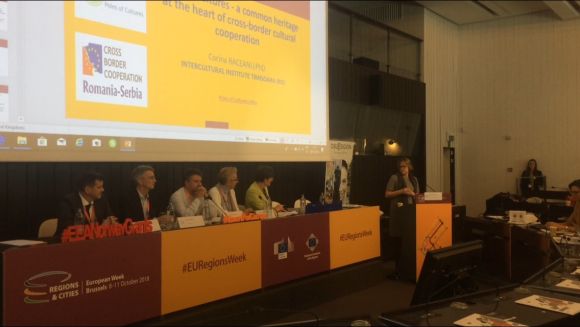
How culture can represent an opportunity for development? Could a concrete cultural action effectively drive the economic growth of local communities, their engagement, cohesion and integration?
European culture has an important role in regional and local development, but also when boosting relationships and cooperation. Preserving European cultural heritage with concrete actions and projects helps local and regional communities to grow.
This has been one of the themes debated during the European Week of Regions and Cities. In particular, the meeting titled “Cultural heritage: worth the investment?” dealt with this important topic when presenting four projects from different European countries. The projects are about “poles of cultures”, “large-scale investments” and “transfers of knowledge”. Two of the above projects have been supported by EU funds, while the others are supported by EEA and Norway Grants.
According to some of the speakers, “the cultural and creative sectors are important drivers of both social inclusion and economic growth. Investing in these sectors creates dialogue in multicultural societies and stimulates job creation.”
“The objective is to valorize European cultural heritage,” said Oda Sletnes, Norway’s ambassador to the EU. According to Sneška Quaedvlieg-Mihailović, General Secretary of Europa Nostra, “investing in cultural heritage, which is part of the identity and people’s daily lives, is of essential importance: on one side it gives a sense of belonging but at the same time it gives energy, inspiration for creativity and for investing in sustainable development of this regions.”
Europa Nostra is very much promoting that crucial message to highlight the importance of cultural heritage for the future of Europe. “The cultural heritage can benefit from various investments. In fact, the European Commission and European funds are already supporting innovative and cooperative projects for cultural heritage,”-she added.
Another part of the EU cultural programme has been to focus on the relationship between culture and environment. The environment has an aspect which is related to cultural heritage because it is not very easy to distinguish the natural from the cultural part of the environment. So, there are various projects which relate to education, research, agriculture, explained Sneška Quaedvlieg-Mihailović.
In fact, if we look at all the European countries, Italy is another example in terms of the connection between environment and cultural heritage. We can’t imagine Venice without its lagoon, the South of the country without sea and wild mountains, Pompeii without its archaeological area. They are connected and both of them have to be preserved.
For example, Pompeii, the historical site near Naples in Italy, was given an investment of 78 million euros from the EU for the project which aims to stop and reverse the deterioration of the buildings and decorative and architectural fittings. In 2010 and in 2011, violent storms and torrential rainfall caused the partial collapse of the site. This is why this project wants to safeguard the archaeological area of Pompeii and its important heritage of historical ancient Roman treasures which today help the growth of the territory through cultural tourism.
All over Europe, there are lots of projects financed or co-financed by EU with the same aim. Actually, an intensive action on European, tangible or intangible, cultural heritage, certainly helps local and regional development with an increase of tourism, education, employment and social cohesion.
Written by: Ylenia Musolino
Edited by: Bruna Tomsic



